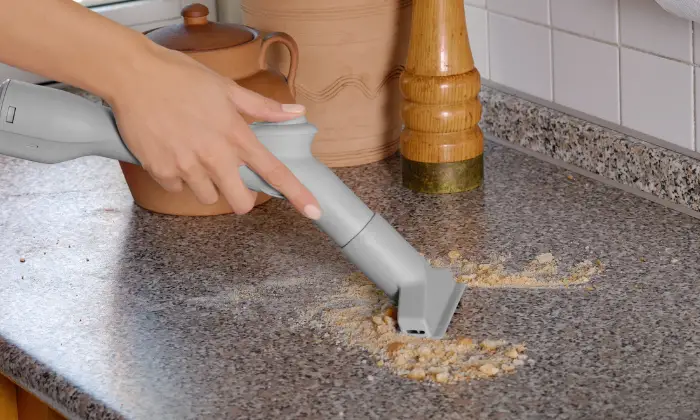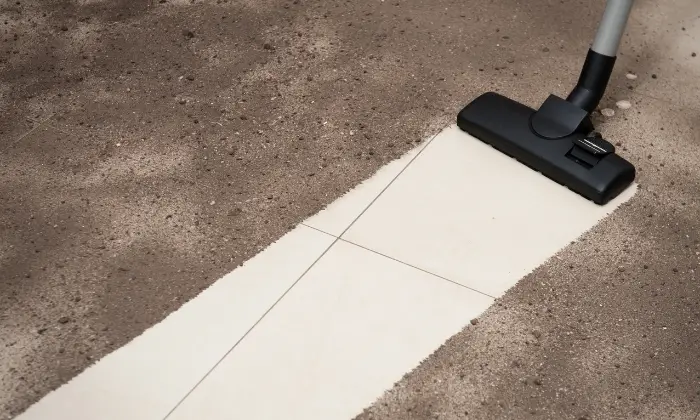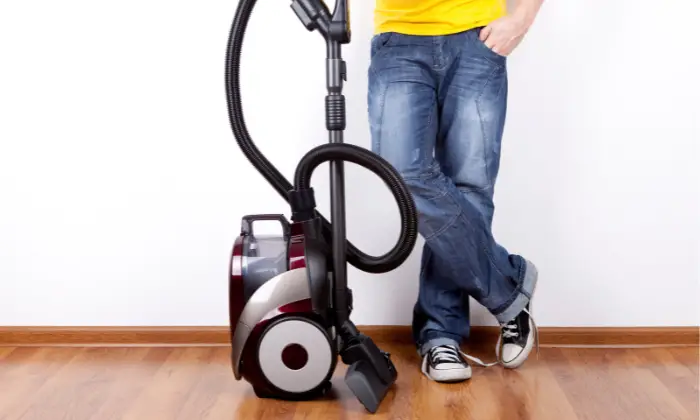
Do you want to know how much suction power your vacuum cleaner has? Maybe you’re considering buying a new vacuum cleaner and want to compare models. Or perhaps you’re just curious. Vacuum cleaner suction power is a crucial metric to consider when choosing the right vacuum cleaner for your home. Vacuums with high suction power can be challenging to move around and pick up smaller debris than vacuums with lower suction power.
Regardless of your reasons, This blog explains how to measure vacuum cleaner suction power using a quick and easy method.
What is vacuum Suction Power?

Suction power is the force that a vacuum cleaner can generate to lift dirt, dust, and debris off a surface and into the vacuum’s dirt cup or bag. The stronger the suction, the more influential the vacuum will be in cleaning.
How to Measure Vacuum Cleaner Suction Power
There’s no need to be a vacuum cleaner expert to measure the suction power of your vacuum cleaner.
All you need is a unique tool called a "Vacuum Cleaner Suction Gauge, Water Lift Gauge." |
This can be bought online or at most hardware stores, allowing you to measure the power of the vacuum cleaner’s suction.
Once you have measured the vacuum cleaner’s suction power, you’ll know how much dirt it can clean in one go! Make sure the vacuum cleaner you’re using has powerful suction, which will help it pick up dirt and dust from your floor.
There are two best ways to measure the actual suction power of your vacuum cleaner:
1) Using an airflow meter or
2) using a sealed container method.
The airflow meter method is the more accurate of the two approaches, but it requires special equipment that most people don’t have at home. If you’re interested in this method, you can read more about it here.
For our purposes, we’ll focus on the sealed container method, as it’s quick, easy, and requires no special equipment.
Here’s what you’ll need:
Assembly Instructions:
1. Cut a proper hole in the lid of your container that’s just big enough for the end of your vacuum’s nozzle to fit through snugly.
2. Place the piece of paper over the hole in the lid and tape it down securely around all edges. This will ensure that no air can leak out when we measure the suction power.
3. Turn on your vacuum cleaner and wait for it to reach its total operating capacity.
4. Carefully place the container upside down on top of the vacuum’s nozzle so that the hole in the lid is aligned with the nozzle opening.
5. Hold the container in place and start timing how long it takes for the paper to detach from the lid and get sucked into the vacuum (you may need someone to help you with this).
6. Once the paper has been sucked into the container, stop timing and remove both pieces from the top of the vacuum cleaner nozzle.
7. That’s it! You’ve just measured your vacuum’s suction power! Now, you need to do, is to repeat steps 4-7 two more times to get an accurate reading (we recommend averaging your three readings for greater accuracy).
8. To compare different vacuum cleaner specifications, models, or brands of vacuums, repeat these steps using each one in turn and compare your findings side by side!
What should be the suction power of a vacuum cleaner?

Most vacuum cleaners today have suction power ranging from 500-1500 watts. However, this number isn’t always indicative of a vacuum’s cleaning ability, as other factors, such as airflow and brush roll design, also play a role.
When comparing vacuums, it’s best to look at both the suction power (in watts) and the reviews to get a sense of a vacuum’s true cleaning potential.
I hope this helps! 🙂
F&Q about How to Measure Vacuum Cleaner Suction Power
Q: How do I know if my vacuum cleaner is powerful?
There are two ways to measure your vacuum’s suction power: an airflow meter or a sealed container method. The airflow meter is the more accurate of the two approaches, but it requires special equipment that most people don’t have at home. If you’re interested in this method, you can read more about it here (How to Measure Vacuum Cleaner Suction Power).
Q: What should I look for when buying a vacuum cleaner?
When comparing vacuums, it’s best to look at both the suction power (in watts) and the reviews to get a sense of a vacuum’s true cleaning potential. Most vacuum cleaners today have suction power ranging from 500-1500 watts.
However, this number isn’t always indicative of a vacuum’s cleaning ability, as other factors, such as airflow and brush roll design, also play a role.
Q: What is the difference between suction power and airflow?
Suction power measures how much air a vacuum can move in a given time and is usually measured in watts. On the other hand, airflow measures how much air passes through the vacuum’s nozzle and is measured in cubic feet per minute (CFM).
The two terms are regularly used interchangeably, but they are technically different.
Q: How can I increase the suction power of my vacuum?
There is something you can do to increase the suction power of your vacuum:
-Clean or replace the filter regularly
-Make sure there are no blockages in the suction hose or nozzle
-Check for leaks in the vacuum’s seals
-Upgrade to a more powerful model
Q: Does higher wattage mean better suction?
Not necessarily. The wattage is only one factor that determines a vacuum’s suction power. Other factors, such as airflow and brush roll design, also play a role.
When comparing vacuums, it’s best to look at both the suction power (in watts) and the reviews to get a sense of a vacuum.
Q: How is the suction force measured?
The suction force of a vacuum can be measured using an airflow meter or a sealed container method. The airflow meter is the more accurate of the two methods, but it requires special equipment that most people don’t have at home. If you’re interested in this method, you can read more about it here.
Q: What are some other factors that affect a vacuum’s cleaning ability?
In addition to suction power, a few other factors can affect a vacuum’s cleaning ability, such as airflow, brush roll design, filtration, and other specifications.
Q: How often should you clean my vacuum filter/ HEPA filter?
Most vacuum manufacturers recommend cleaning or replacing the filter every 3-6 months. However, this may vary depending on how often you use your vacuum and the filter type. You can read our brief blog about How Often you Replace your vacuum cleaner.
Conclusion:
Measuring suction power is important if you want to know how well your vacuum will perform at picking up dirt, dust, and debris from surfaces. The sealed container method is quick, easy, and requires no special equipment. You just need a clear plastic container with a lid, a piece of paper, some tape, scissors, and a stopwatch or timer! With these supplies and 8 easy steps, you’ll be able to measure your vacuum’s suction power in no time!





